A refined version of my groundhog stew, this recipe is like a woodchuck's life in a bowl. Read on and I'll explain.
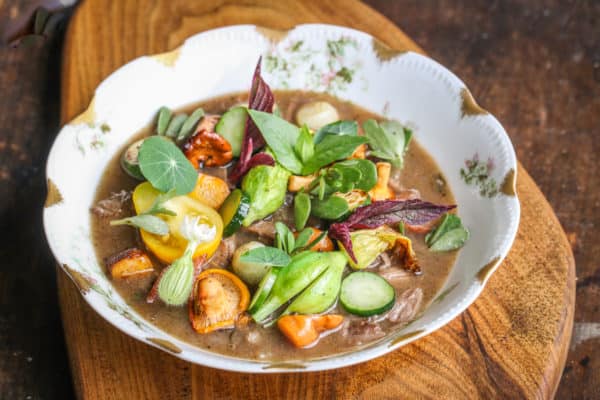
The giant, beautiful gardens on the farm are home to all kinds of plants and vegetables, and they attract the attention of plenty of critters. If you have a garden that's ever been visited by a woodchuck, you know they can be very disruptive.
How I approach woodchucks is a good example of my approach to obtaining wild meat in general. I don't slap on an Elmer Fudd hat and stalk them, rather, if they cause problems and my girlfriends Stepdad Jon traps one, I'll sometimes take one off his hands. It's a natural, seasonal thing, and I like to think of it as an extra bonus the gardens occasionally produce.
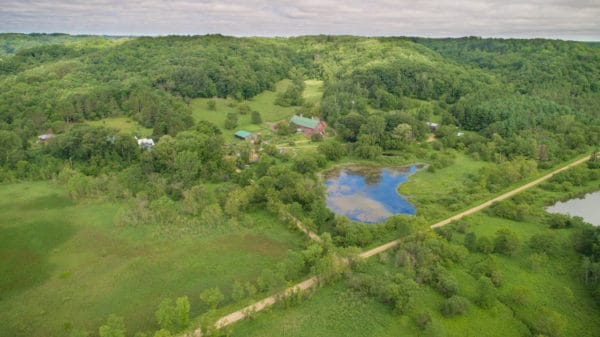
I might set a trap here and there, but, to be honest, I know what I'm good at, and obtaining meat in a traditional way isn't historically one of those things. I have a fishing rod that's seen a little time in the water, and I have a pellet rifle I traded my grandpa for that I use for pig
eons and other things here and there, but really only when the population gets unwieldy. What I have studied is butchery, and when deer season rolls around, that skill becomes a commodity I trade for game.
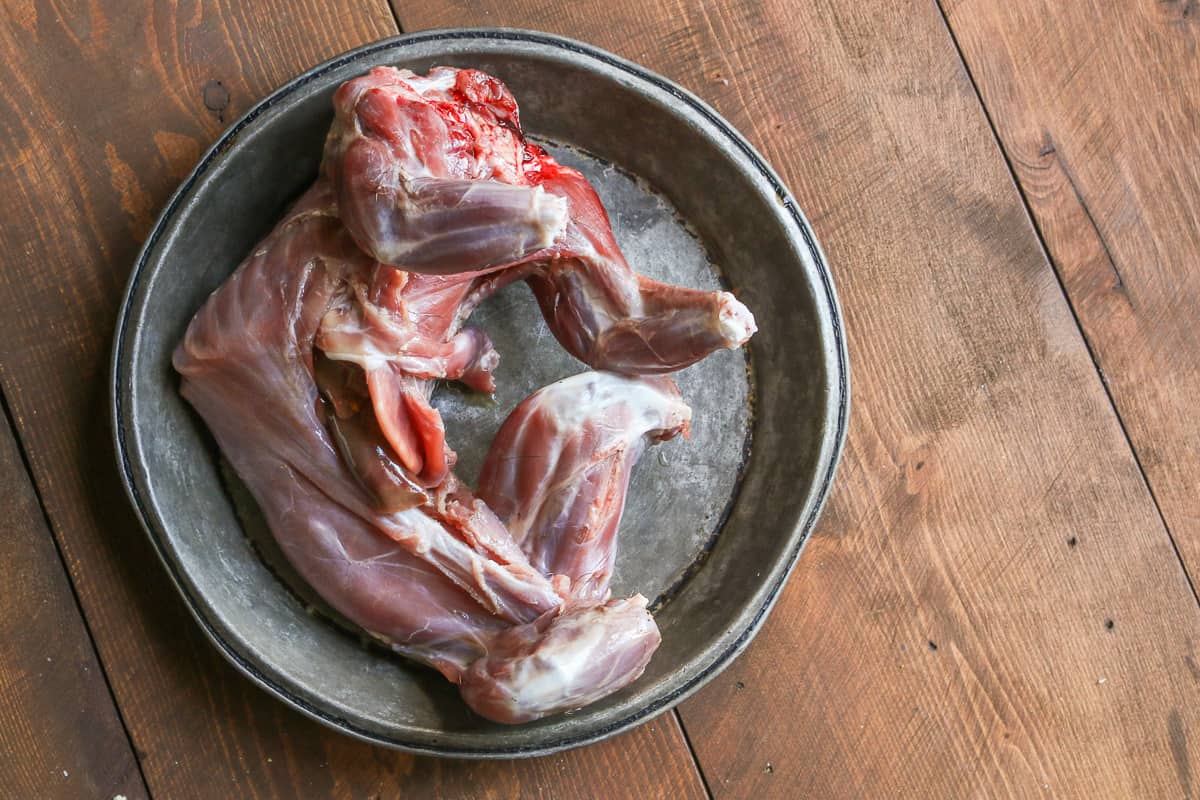
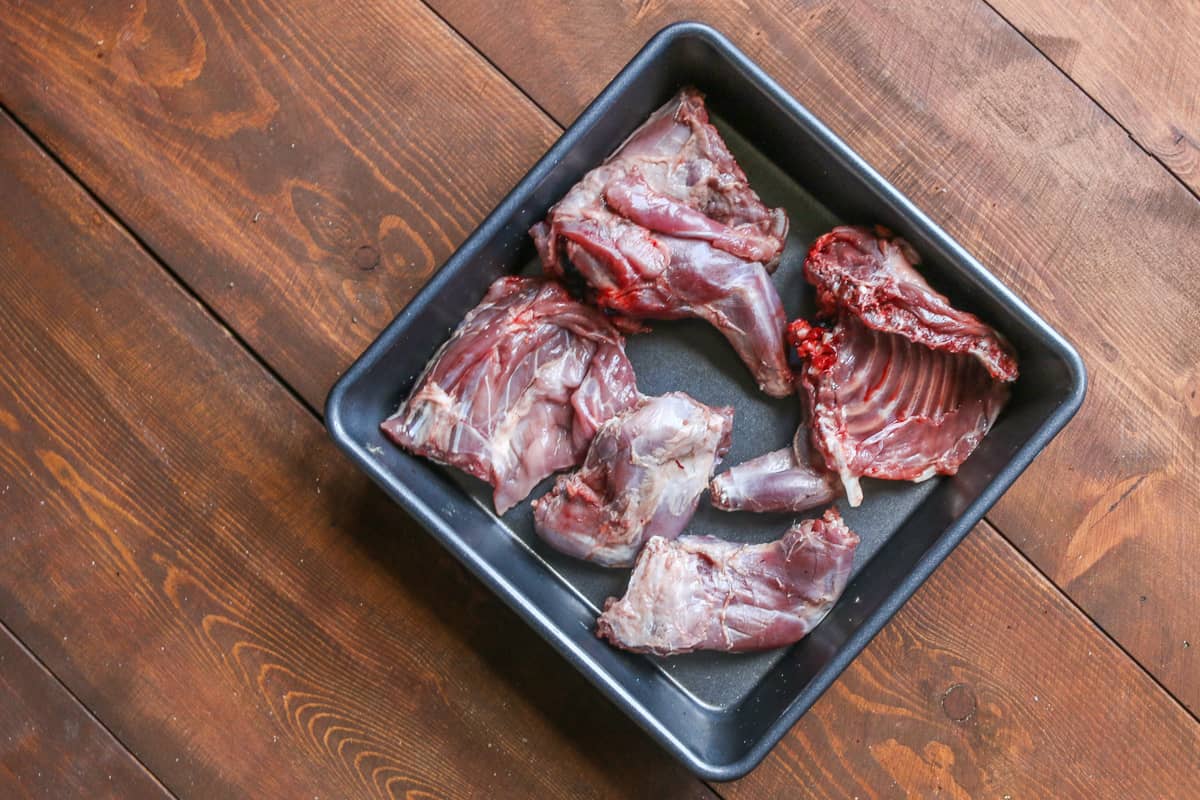
Since there's so many small bones, I like to stew them and pick the meat, as much for the ease of eating as for the fact that stewing uses the whole creature, and all those small bones make a really rich broth for the backbone of a stew. (See my more simple version of groundhog stew for reference).
It's a bit like hare, or rabbits with nice, dark meat. Since they're herbivores too, there's no worries about scents of carnivores, like bear meat after they've been eating salmon, or raccoon after they've been eating crayfish. The meat is generally very clean tasting--a by-product of the rascals feasting on organic garden vegetables.
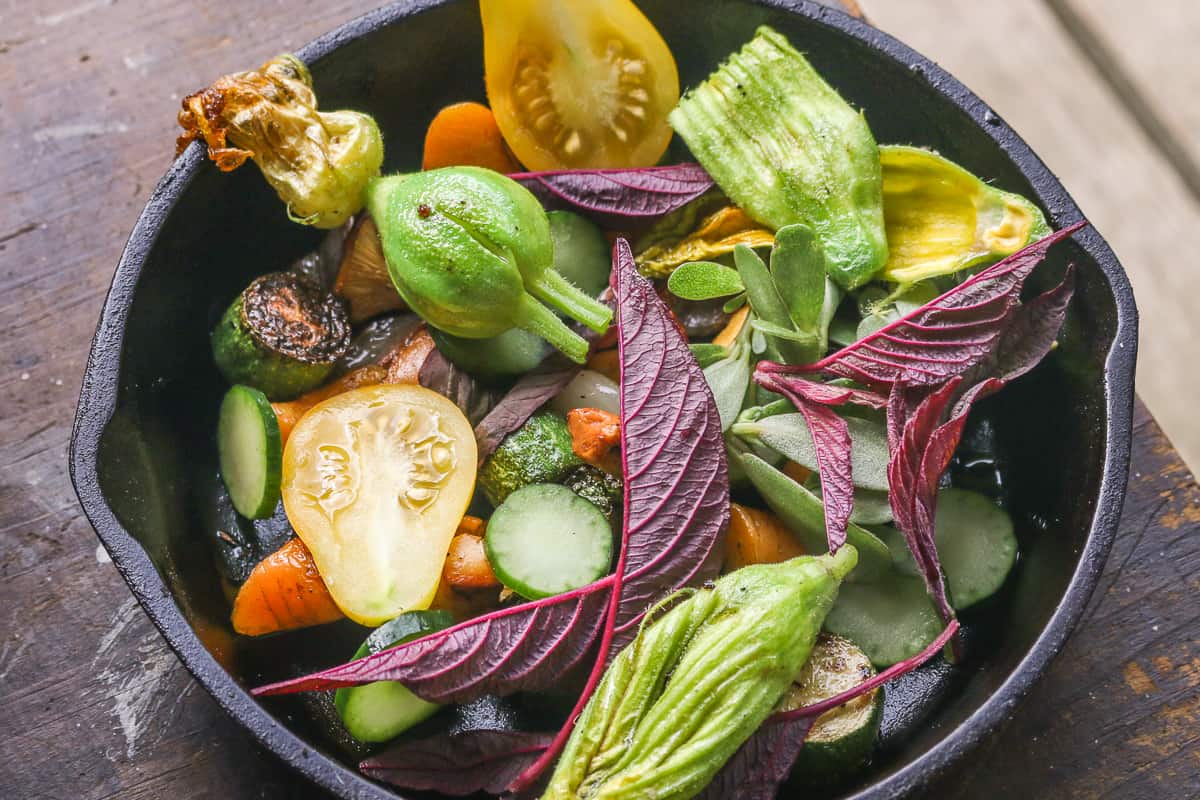
Scent Glands
There is muskiness some people mention, although I haven't encountered it yet. This time while trimming, I kept my eyes peeled for the "kernals" or small glands near the hind legs, armpits and tail I've heard people mention.
It's said they'll spoil the meat, and I think that could definitely be true with older animals, but, to tell you the truth, I haven't had an issue with any of the younger ones I've eaten.
If the groundhog is older though, and you can smell them from a few feet away, you might want to be more thorough, or skip them. I've only eaten generally young, smaller groundhogs, about 2 lbs dressed I'd wager. Oh, and make sure to save the offal, it's just as good as rabbit--mild and delicious.
Here's some images of the scent glands, like I said, I hadn't removed them up until now, so if you miss one (assuming your woodchuck is young and pleasant smelling) it might not be that big of a deal.
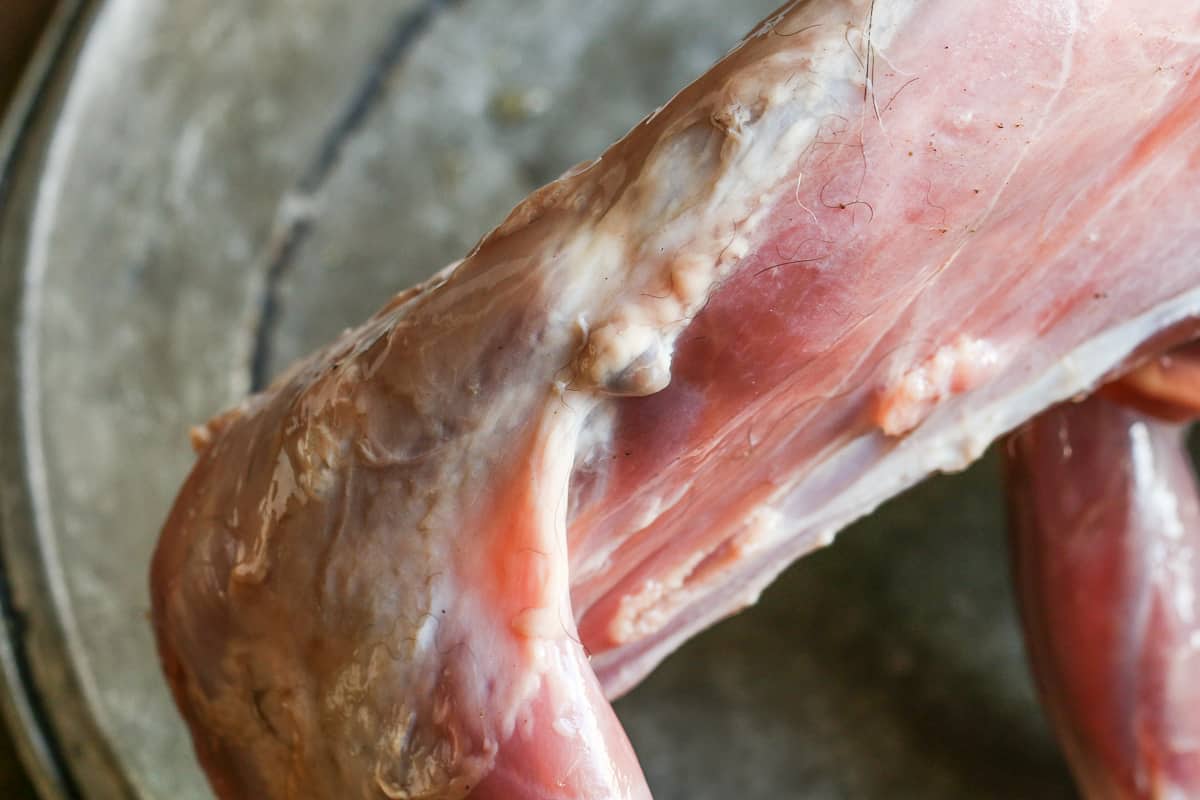
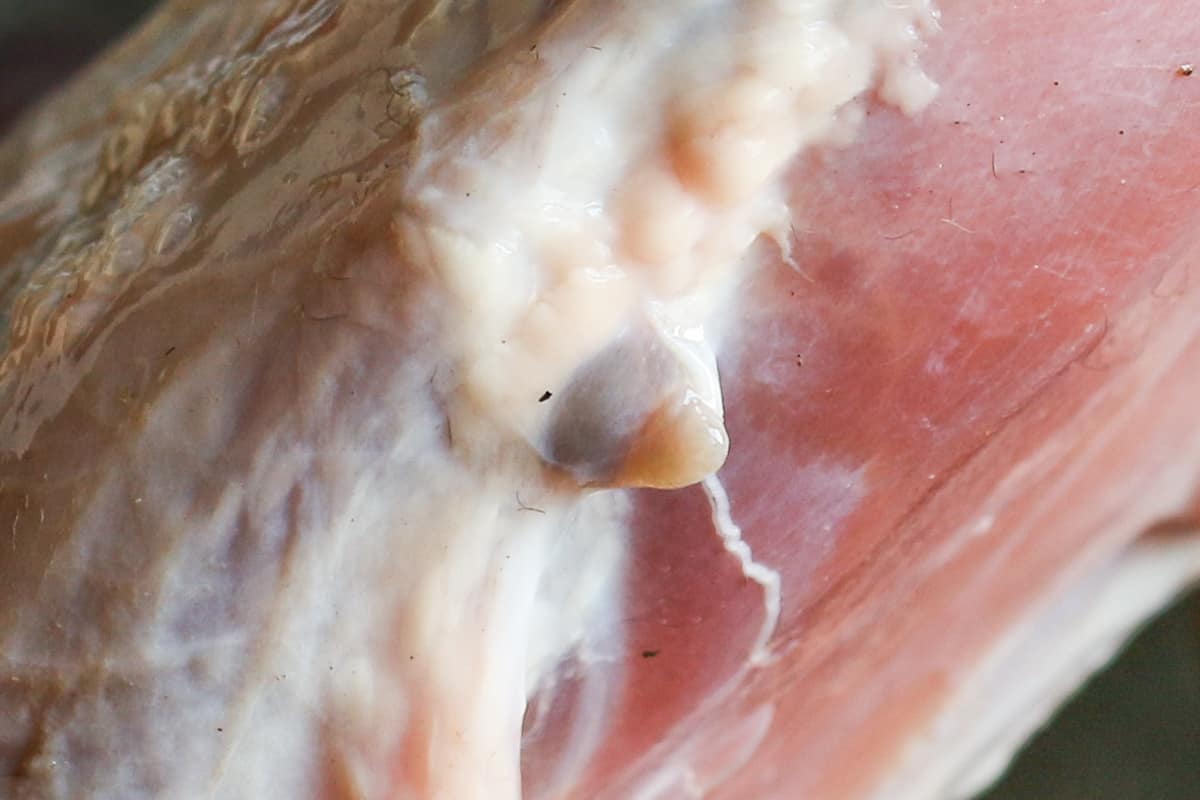
Adding fresh vegetables to finish the dish
This year, I thought a fitting treatment for Mr. (or Mrs.) garden bandit would be a nice stew with all the garden vegetables they were eating. Just putting a few vegetables in the pot while the woodchuck cooks could be ok, but they're bound to overcook, and with some of the things I wanted to add, squash blossoms, fresh tomatoes, etc, I thought they would be better cooked rapidly at the end and scattered on top.
It's a fun way to have a stew of small game with vegetables, when you actually want to enjoy the vegetables. Think of it as a way to make a stew lighter, a trick I used to use in restaurants when cheap stew meat (neck) was available and I needed to sink the food cost, but I didn't want a heavy, traditional stew model, or when I had an ingredient that was best cooked fresh, instead of simmering in a dark stew where it would be lost, chicken of the woods, or other bright colored vegetables like chard stems are good examples.
Woodchuck was great here, but this is a nice way to prepare lots of small game critters if you want to avoid sifting through teeny tiny bones, of if you want to, say, serve someone woodchuck and tell them it's something else, like a turkey leg or braised chicken thighs 🙂
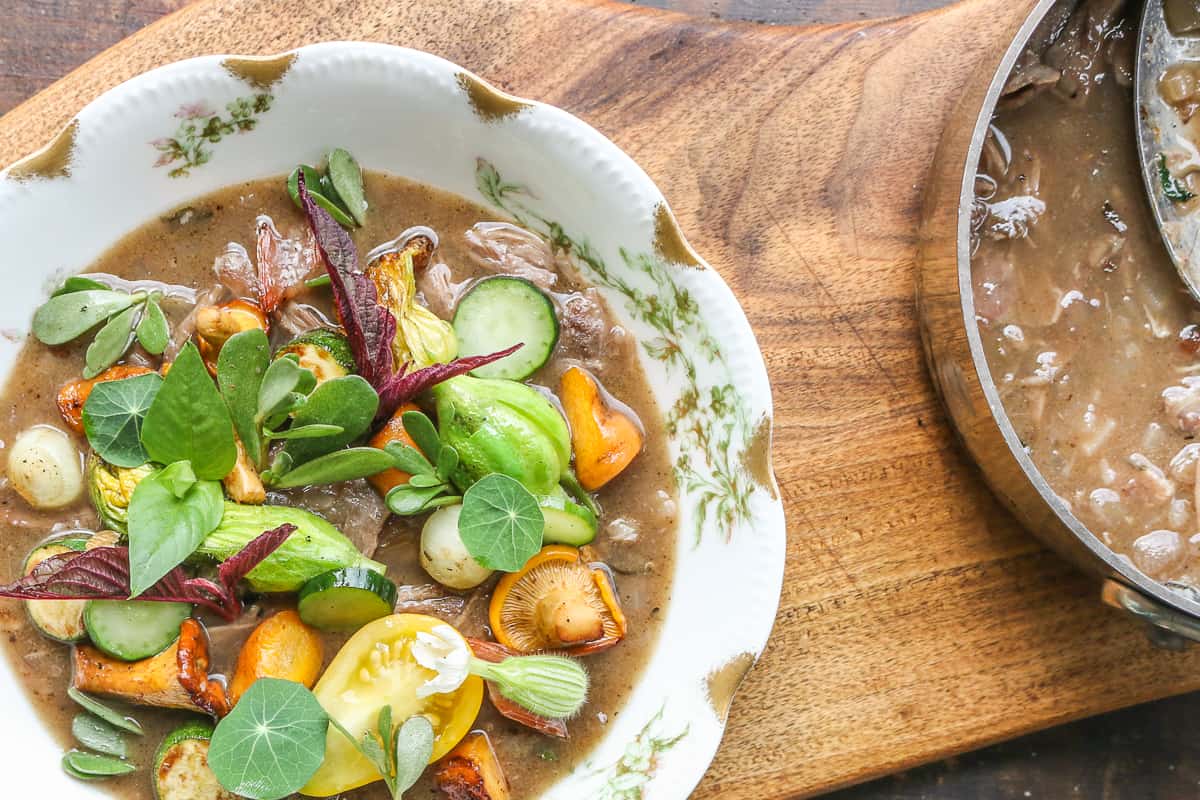
Woodchuck Stew with Garden Vegetables
Ingredients
Stew
- 1 woodchuck/groundhog with it’s heart, kidneys and liver
- Kosher salt and pepper
- 2 teaspoons fresh chopped thyme or rosemary
- Cooking oil or lard as needed, bacon grease is excellent
- All purpose flour as needed for dredging
- 1 small yellow onion
- 2 small cloves garlic or ½ tablespoon minced
- 2 teaspoons tomato paste
- ½ cup dry red wine
- 4 cups water or stock
Vegetable Garnish
- 6 oz Garden vegetables for garnishing, a good blend (see note)
- Fresh ground pepper to garnish
- Good tasting oil such as extra virgin, to garnish
Instructions
- Read the entire recipe before beginning, as you have some choices here.
- Using a shears, cut the wood chuck into 6 pieces, season liberally with salt, pepper and rosemary, then vacuum seal, along with it’s organs and allow to rest overnight, or just put it in a bowl or similar container with a lid.
Build the stew
- The next day, heat some oil in a deep pot that can accommodate the woodchuck, like a dutch oven. Dredge the woodchuck in flour, tap off the excess, brown deeply, working in batches if needed, then add the onion and garlic, more oil if needed, and cook for a minute or two more. Add the tomato paste, stir, and cook a few minutes more until a good fond/glaze has developed on the bottom of the pan. Add the wine, reduce by half, then add the water, cover, put in a 300 degree oven and cook for 1.5 hours, or until the meat moves easily from the bone. Remove the pan from the oven and cool.
- When you can handle the woodchuck pieces, pick the meat, meticulously inspecting it for small bones. Try as well as you can to leave the meat in good chunks. Reserve the meat separately from the cooking liquid, which should look and taste like a nice, rich gravy at this point.
Vegetables
- Next, prep the vegetables. Ideally you’ll have a mix of different things from a garden, small carrots, onions, zucchini and their flowers, greens, herbs, etc. The vegetables will be quickly sautéed to finish, but first you want them at a stage of doneness that will make it easy for them to be thrown into a pan together. Some vegetables can be cooked from raw (zucchini) while some need a preliminary blanching to become tender (onions, carrots). Cut your vegetables into bite-sized pieces, blanch individually as needed, then, when they’re all ready, saute them quickly over medium-high heat and season to taste.
Serving
- Meanwhile, season the woodchuck offal with salt and pepper, and fry quickly over high heat, then remove to a cutting board, allow to rest for a few moments, chop coarsely, and scatter over the bottom of two wide serving bowls. (You can also just chop them and add them to the stew in the beginning, which is easier, if you do that, consider mashing them to a paste and adding with the onions.
- Heat the cooking liquid and the woodchuck meat, double check the seasoning and adjust as needed, then spoon into the bowls. Spoon the cooked vegetables over the top, garnish with a few flowers or herbs if you like, a drizzle of good tasting oil and fresh cracked pepper, and serve.


Rob
Alan - I also have a big vegetable garden, and every year, I have to trap a few woodchucks that are either eating my veggies, or at least trying to get into the garden. Last year, I trapped 6 of the little buggers. This year, I trapped 4 -released 2 of them far from here, and kept 2 for a couple of dinners. I agree that they are best stewed or slow-cooked in some fashion, to allow the meat to fall off the small bones. My wife and I love fresh woodchuck, and now our two grandsons have had it, and they love it too. The meat is delicious, with absolutely no gamey taste at all. My one grandson (aged 10) was fascinated by me cleaning the animal, and preparing the meat for cooking. Like you, I consider an occasional woodchuck meal as a bonus, although I do not seek to kill them unless they are threatening my garden. Anyway, thanks for the post about this, I enjoyed it immensely! Robert
Alan Bergo
Glad to hear it Rob.
Jason
Your sometimes “adventurous” ingredients is one of the main reasons I enjoy your site. I’ve also learned much more about mushrooms other than the popular ones like Morels and Chants. I’ve had some luck lately finding some nice young Chicken of the Woods as well as some Chestnut Boletes. Thanks for the information and entertainment!
Alan Bergo
Thanks Jason. I have a few odd ones coming up you'll like. Great time for boletes right now, too, I've seen B. ornatipes, lots of bi-colors, and Boletus pallidoroseus here in MN, alongside lots from the "porcini" group.
Rob
Speaking of mushrooms, I stumbled upon a great patch of chanterelles last week, which was a great find for me. I'm sure you find them often, but I have been looking for chanterelles where we live (the U.P. of Michigan) for several years now, without much luck. I knew they were around, as a good friend and fellow forager collected a bunch some years ago, and pointed me to the general area where she found them. So I searched that area in August/Sept. for the last few years, but no luck until this year. I found them growing in a young aspen stand, believe it or not.........the area had been clearcut maybe 15 years ago. Seems like an unusual spot to find chanterelles(?), but they were there, in abundance. Anyway, we are enjoying them with some great meals lately, and dehydrating the rest for use later this winter. I will be checking your website for the best ways to prepare chanterelles. Thanks again for what you do, you are an inspiration.
Li
Sorry, just read my comment. Wasn't trying to make fun of your lifestyle. Most of my impressions of wildlife are from Disney. Here in Hawaii we eat/collect some things thought unusual by the rest of the US. Hope you and yours are doing well. We are having to go back into semi-shut down due to spikes in cases.
Alan Bergo
No worries Li, trust me, I'm used to it. If you poke around on here you'll see a lot of things. One week I might post a vegan recipe, the next week it could be an omelet from Spain traditionally made of testicles and brains, or ideas about the best time to harvest roadkill. I don't care what it is I eat, as long as the ingredient is high quality.
That being said, everyone draws their own lines around the food they eat, especially regarding meat. It's a very chargey issue. Personally, I won't eat cats and dogs, or an animal I keep as a companion, as well as animals raised in confinement or from CAFOs. Industrial meat operations were one of the things that pushed me to enjoy small game, and to diversify the meat I consume. Small game like rabbits, squirrels, cuy, and woodchuck reproduce at a much faster rate, with much lower inputs than large ruminants (cattle). From a sustainability standpoint, they really win on all fronts, although you need to diversify your intake as some are more nutrient rich than others.
Robert
I am in awe of your commitment to sustainable foraging: and trust me I have thrown a few roadkill hare, pheasant and roe deer into the pot.
Li
You lost me. Please give good warning if you do squirrel stew. Queasy at the thought. Otherwise really like your blog. While foraging, do you collect flowers also?
Alan Bergo
Re: flowers, yes, of course, I collect a lot of flowers. Some of my peers say flowers are useless, a waste of calories, or that they all taste the same, but it isn't so. Some flowers are incredibly strong and herbaceous tasting (signet marigold, bee balm, etc) some are mild like creeping bellflower, some are spicy like arugula (nasturtium, hosta, etc) some can be used like you would herbs (elderflower, meadowsweet, milkweed). There will be a good list and dissemination of them in my upcoming book on plants.